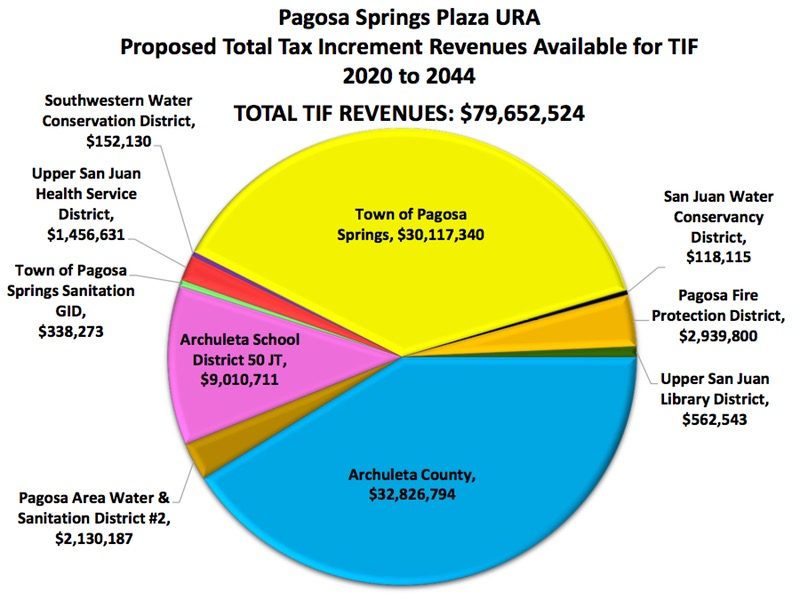Today at 5pm, the Archuleta Board of County Commissioners will hold a joint meeting with the Pagosa Lakes Property Owners Association (PLPOA) at the County Admin office. On the agenda?
Joint Funding/MOU:
- Youth Multi-purpose Athletic Field
- Parking Lot
Road Work in PLPOA
- Plans for Vista & Trails Subdivisions
- Reconfiguration of Navajo Trail to Join Park with Vista Mailbox Location
Update on PLPOA Involvement in Strategic Planning
Bear Conflict Reduction Ordinance
Follow-up on Creation of Recreation District
I’m a bit surprised that our housing crisis doesn’t appear on this agenda. Housing seems, to me, a much more pressing issue than a future tax-funded “Recreation District”. But maybe that’s just my working-class-family background, talking.
I concluded Part Three on Friday, by mentioning some interesting comments made by Chuck Marohn — founder of the national ‘Strong Towns’ movement — in his recent podcast about America’s housing crisis.
 The crisis is painfully apparent here in Pagosa Springs, with workforce families struggling to find affordable shelter, and employers struggling to find employees. Our local governments and nonprofits are coming together to try and address the problem.
The crisis is painfully apparent here in Pagosa Springs, with workforce families struggling to find affordable shelter, and employers struggling to find employees. Our local governments and nonprofits are coming together to try and address the problem.
But what is the best solution? Over the past few years, our Town government has purchased several parcels of vacant land, specifically for workforce housing, but no such housing has yet appeared.
The Archuleta Board of County Commissioners, meanwhile, has donated several dozen tax-lien properties to Habitat Archuleta and to the Pagosa Springs Community Development Corporation, and as a result, 13 ‘workforce’ homes are planned for 2024. Pagosa Area Water and Sanitation District (PAWSD) is supporting these projects by waiving certain water and wastewater fees, with the lost revenue back-filled through surcharges paid by regular PAWSD customers.
Mr. Marohn and his colleague at Strong Towns, Daniel Herriges, just published a book, Escaping the Housing Trap, analyzing the housing crisis, and the successful (and unsuccessful) ways the crisis is getting addressed here in the U.S. The book is available through various outlets.
Below is a 20-minute video summary of some of the ideas in their book. The ideas do not necessarily involve money from Washington DC or from the politicians in Denver. The ideas relate more directly to what we can do, for ourselves, right here in Pagosa Springs.
If we can find the political will.
In a 2022 article, Mr. Marohn wrote:
What will housing prices be a year from now? There is no way to know for sure. What we can do is acknowledge that housing markets — what should be the most localized of markets — are currently more sensitive to factors outside of your community, outside of your control, than anything within.
If there’s one urgency you feel about housing, it should be a desire to change that. We need to re-localize our housing markets and make them responsive to the capacity and desires of people within our community.
Without that, we are going to struggle to build strong towns.
According to a recent article by reporter Asia Mieleszko on StrongTowns.org, the city of Muskegon, Michigan is trying an innovative method for getting attainable housing constructed. The city is using ‘Tax Increment Financing’ — often referred to as ‘TIF’ — to underwrite the subsidies needed to make new homes affordable to working families.
The Town of Pagosa Springs created an Urban Renewal Authority (URA) back in 2019, based on some fanciful legal and economic advice provided by the owners of the Springs Resort and adjacent vacant property. According to the documents provided by the Springs Resort’s consultants, the Town could encourage commercial growth on Hot Springs Boulevard by granting property tax relief to the Springs Resort, to help finance a major resort expansion plan.
The Town Council was shown a pie chart that illustrated the subsidy plan, but that also included some grossly inaccurate numbers.

The chart suggested a proposed government subsidy of more than $79 million for the Springs Resort, to be generated through TIF financing. A slim majority of the Town Council tentatively approved of this idea, but a subsequent ballot measure, approved overwhelmingly by Town voters, required the Town and its URA to obtain voter approval before approving the Springs Resort subsidy, or any future developer subsidy amounting to over $1 million.
The Springs Resort never officially applied for a URA subsidy, for whatever reason. But they did go ahead and begin construction of a new 78-unit hotel, a new restaurant, and accompanying mineral baths, without any government help, so apparently the URA was not necessary to promote this particular expansion project.

The Town’s Urban Renewal Authority still exists, although it’s been inactive the past couple of years.
Could the TIF financing methods used in Muskegon, Michigan, be used to finance housing within the Town limits? I have no idea. But I’m curious.
According to Ms. Mieleszko ‘s article on StrongTowns.org, the Muskegon TIF technique has resulted in 143 housing units, started or completed, since 2019, with another 61 units contracted for. About 178 vacant city-owned parcels could be added to the program in the coming years. She writes:
A key feature of the program is how the city uses tax increment financing, or TIF, to finance the homes for less than for what it would cost others to build. According to [Muskegon Development Services Director Jake Eckholm] new construction averages at about $220 to $250 per square foot to build, which would put a 1,000-square-foot “starter home” at $220,000 to $250,000. In using TIF, the city is able to deliver a similar home for $135,000 to $200,000, which more accurately aligns with the area median income, or what locals can actually afford. (Note that the city is not losing money on these projects, so the project can scale to meet demand.)
This program in Michigan is obviously based on the idea that government subsidies will help us solve the housing crisis.
Chuck Marohn and Daniel Herriges are likewise interested in projects that can “scale”… that can back-fill the vast number of homes that the American construction industry has failed to provide during the 21st century.
If you watched the video above, you heard some of their ideas.
- Develop financial products aimed mainly at providing shelter, rather than being aimed mainly at providing shareholder profits.
- Modify the empty rooms, in the oversized American homes owned by ’empty-nesters’, by converting these existing shelter spaces into rental mini-apartments.
- Make it financially and politically viable for families to add ‘guest cottages’ to their property, that can be rented out to provide additional family income.
Whether any or all of these ideas are possible in a rural community like Pagosa Springs is currently unknown. Local housing advocates have certainly mentioned these kinds of ideas to our leaders, but the uptake has been slow.
I just finished reading a report in The New Yorker about real estate mogul Nathan Berman who buys mostly-vacant office buildings in downtown Manhattan and converts then into tiny, semi-luxury apartments. The growing popularity of remote work, especially since the COVID crisis, has left much of the office space in New York vacant, and allowed Mr. Berman and his company to address New York’s housing crisis by providing small rental units to primarily young professionals. The result has been the re-invigoration of dying neighborhoods — once commercial but now mostly residential.
We’ve seen one large motel, here in Pagosa, converted into 98 small apartments. Perhaps other motels will follow suit?
Perhaps another part of the solution, to our housing crisis, is to add units to existing homes…

